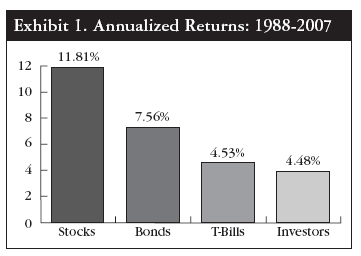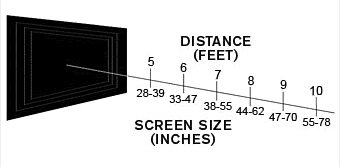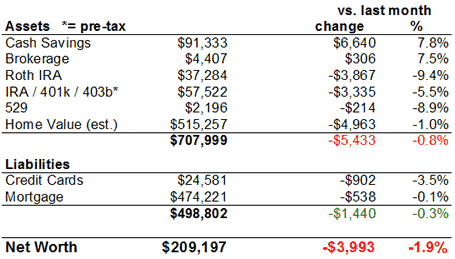Last week, I heard a co-worker complain about being denied when trying to open a new checking account. I told her to check her ChexSystems report. ChexSystems is a consumer information database that contains information about your banking history, similar to credit bureaus and your credit history. Turns out she forgot about an account and actually owed some other bank some money (probably just piling on inactivity fees…).
For the same reason, you have the right to a free ChexSystems report once a year, just like the annual credit reports. In addition, you can request one whenever you get declined for a bank account where ChexSystems was used.
I decided to get my own as well, and surprisingly it came via snail mail within a week or so. I say surprisingly because last time I tried to order a couple of years ago, I don’t think I ever got it. (I have never had trouble opening a bank account, so I figured nothing bad was on it.)
They have a sample ChexSystems report online, which looks exactly like what I have, and explains all the items they have recorded:
Reported Information
“Reported Information refers to reports of accounts that have been mishandled, reported for cause, and/or outstanding debts. Reported Information is submitted directly to ChexSystems by members of our service, which consists mainly of financial institutions. Our current practice is to retain this information for a period of five years.”
This includes account closed due to repeated bounced checks, or overdraft debts that were never paid. If you have one of these in error, you’ll definitely want to clear it up.
Inquiries Initiated By Consumer Action
“Inquiries Initiated By Consumer Action refers to inquiries resulting from a transaction initiated by you. These include applying for a credit card or completing an application at a financial institution. Please note that the inquiries are part of your credit history and may be included in our reports to others. These inquiries can be viewed for ninety days up to three years. ”
Basically, a list of all banks that applied for within the last 3 years that used ChexSystems to verify me. They included KeyBank, E-Trade, FNBO Direct, WaMu, DollarSavingsDirect, and WT Direct. Banks that I know that I applied for recently that weren’t on the list include EverBank, which makes sense since they used the Equifax ID check service during my application process.
Inquiries Not Initiated By Consumer Action
“Inquiries Not Initiated By Consumer Action refers to inquiries resulting from transactions you may not have initiated, so you may not recognize the source. Members of our service with a permissible purpose include current creditors, pre-approval creditors, and potential investors trying to assess risks. We report these requests only to you as a record of activities, and we do not include any of these requests on credit reports to others.”
The only bank listed here was Washington Mutual. For some reason, they made three inquiries in one day back in 2006. Weird.
Retail Information
“Retail Information refers to returned checks written on an account and certain collection accounts. Retailers and other businesses report this information to Shared Check Authorization Network (SCAN). ChexSystems receives this information directly from SCAN and is not involved in the collection of these items.”
Nothing here, I believe it counts bounced checks reported by merchants.
History Of Checks Ordered
“History of Checks Ordered refers to a record of check orders placed within the past three years.”
Nothing here, either. Probably because I would never order from Deluxe Corp. (which owns ChexSystems) since they are horribly overpriced. I barely make it past the starter checks usually, but if I do need checks I buy them from Costco.
Social Security Number Validation
“Social Security Number Validation indicates the year and state that a particular sequence of digits first became available for issuance. This information does not include the name of the individual to whom the number was issued.”
It says my SSN became available for issuance in 1987. This is interesting, considering I was born nine years before then…
Drivers License Validation, Drivers License Verification
“Drivers License Number Validation indicates whether or not the format of the drivers license number provided matches the requirements set by the state of issuance. Drivers License Number Verification is information provided to ChexSystems by the state that issued the drivers license number. This information, which is limited to certain states, identifies the name and date of birth of the individual to whom the drivers license was issued.”
Added: A smaller competitor to ChexSystems is TeleCheck. To get your free annual report from them, you must call 1-800-366-2425. I called them on 1/11, and they stated that they had no negative information me, so there was nothing to send me.



 Zecco Trading announced on Friday via e-mail that they will be raising the minimum requirements to receive free trades on their accounts starting next month. Thanks to everyone who also alerted me.
Zecco Trading announced on Friday via e-mail that they will be raising the minimum requirements to receive free trades on their accounts starting next month. Thanks to everyone who also alerted me. The Best Credit Card Bonus Offers – March 2024
The Best Credit Card Bonus Offers – March 2024 Big List of Free Stocks from Brokerage Apps
Big List of Free Stocks from Brokerage Apps Best Interest Rates on Cash - March 2024
Best Interest Rates on Cash - March 2024 Free Credit Scores x 3 + Free Credit Monitoring
Free Credit Scores x 3 + Free Credit Monitoring Best No Fee 0% APR Balance Transfer Offers
Best No Fee 0% APR Balance Transfer Offers Little-Known Cellular Data Plans That Can Save Big Money
Little-Known Cellular Data Plans That Can Save Big Money How To Haggle Your Cable or Direct TV Bill
How To Haggle Your Cable or Direct TV Bill Big List of Free Consumer Data Reports (Credit, Rent, Work)
Big List of Free Consumer Data Reports (Credit, Rent, Work)